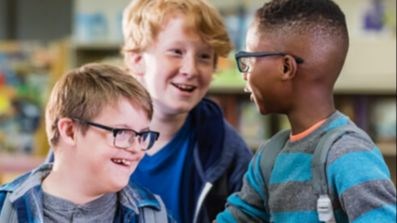Transitioning from Grade 7 to Grade 8 for Students with Special Needs

Please refer to the Elementary and Secondary Special Programs Review and Placement Deadline Dates document which is sent to Principals, Special Education program staff, Resource team contacts and Area and Secondary Counsellors in September.
September
- Case Manager is determined.
October - January
- Case Manager invites Learning Services representative to meet and discuss Ministry designated students who may be considered for a special education program placement for Grade 8.
- Case Managers complete Request for Designation and/or Special Education Program Placement for and include the IEP, school-based team minutes, Psychological assessment, Speech and Language assessment if available, report card and any other supporting documents.
- Mail the documentation via the blue bag to Learning Services.
January
- Deadline for referrals for Grade 7 students recommended for Special Education program placements for Grade 8.
February
- Secondary special Education program placement offers for Grade 8 students are determined by Learning Services staff. Letters offering placement are then sent electronically to Elementary Special Education Administrators with a cc. to the Secondary Special Education Administrators with a proposed class list for September.
- Articulation - Secondary Counsellor and Vice-Principals meet with the elementary School Based Team to discuss strengths and needs of each Grade 7 student. Students recommended for ELL, a resource or skills block or are a Counsellor’s alert are discussed.
March
- Student, Parents and Case Manager attend secondary special education program open house. The school-based Case Manager is responsible for forwarding the signed Consent/Refusal for Special Education Program Placement form to Learning Services. The original form is placed in the student’s confidential file.
- A transition goal is identified with input from the student and included in the IEP.
April, May, June
Students have opportunities to visit their new secondary school to get to know where the cafeteria, washrooms, gym, resource room, special education classrooms, counselling suite and school office are located.
- Photographs of the building, specific staff and areas of interest can be taken to make an album for the student to look at over the summer.
- Transportation from home to school to be determined. If the student is to be transported by First Student bus service, the sending school is to send a request for transportation to Learning Services by mid-June. If the student is taking public transit or walking to and from home to school, then walk and/or bus training programs need to be developed.
- Specific life skills to be identified and training programs developed, for example, time and money management, padlock or combination lock opening and closing and independent appropriate clothing choices will assist the student in being ready for school in September.
- Peer Counsellors may be identified to assist the students with orientation to their new school in the Fall.
- Providing students with strategies to deal with feeling anxious about a change and experiencing something new will be protective factors to help with a smooth transition.

